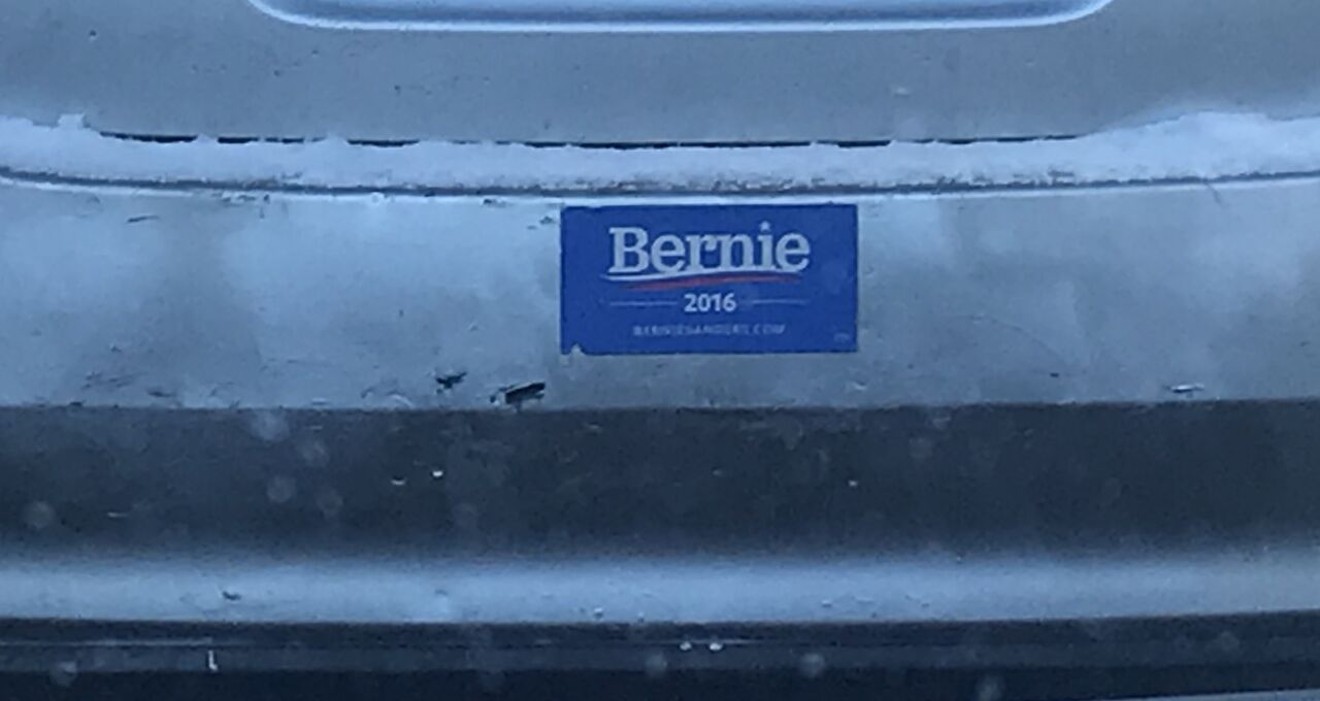But drive around Denver, and it's hard to tell that Sanders lost. His campaign bumperstickers and posters are still on cars and walls around town, nearly two years after the race.
It's easy to theorize that Donald Trump has something to do with this. Recent elections and Trump's historically low approval ratings have heightened Democratic Party energy. Generic ballot polling, often a strong forecaster of midterm elections, shows Democrats with a monstrous double-digit advantage, leading to increasing anticipation that the 2018 midterms could feature a Democratic "wave," with the possibility of Democrats re-taking control of the House of Representatives and perhaps the Senate.
But Bernie Sanders never represented establishment Democrats. A sense of unbridled excitement — and, perhaps, resentment toward the perceived "establishment" wing of the Democratic Party — flourished under his campaign, which touted a $15 federal minimum wage and free college tuition for all.
Still, are the Sanders signs indicative of pro-Democratic energy — or, at the very least, anti-Trump energy — or do they represent lingering party division after the hotly contested primaries from early 2016?

A Bernie Sanders sign next to a Hillary Clinton poster in Capitol Hill, nearly two years after the Democratic primaries.
Chris Bianchi
A former Obama administration foreign-policy official thinks Sanders signs should indicate unity rather than division.
"There are some folks who are still divided, I think, but a lot of folks aren't," says Dan Baer (the former Obama administration official who ran for the 7th District Democratic nomination but dropped out when Ed Perlmutter ultimately decided to run for re-election). "I have a 'DEM' bumpersticker on my truck because the most important thing for 2018 and 2020 is that we go into those elections united. The issues that Bernie gave voice to need to be on the agenda. Tackling sexism and racism needs to be on the agenda. The issues that will drive the 21st-century economy need to be on the agenda. The issues about American leadership in the world need to be on the agenda.
"We need to be focused on a strong, modern, progressive agenda that looks forward to 2018 and 2020, not back at 2016," he says.

Gino Santa Maria/Shutterstock.com
"The Bernie 2016 campaign gave many people something to believe in again," Tillemann explains. "In a world where too many Americans feel like they are victims of a rigged system, Bernie's vision of universal health care, free higher education at public colleges and universities, a revitalized labor movement and his pro-consumer positions defined a new American dream. The unifying theme was that we are all in this together.
"Bernie gave people hope for the future," he continues. "He made supporters feel good about working together for the common good. My guess is that many of these signs are simply nostalgia for what could have been. Bernie gave us hope and showed us how 'great America' might have been, and what it might still be."
A Colorado delegate for Bernie Sanders's campaign last year largely agrees.
"I don’t think it really has much to do with the Democratic Party generally," says Gabriel McArthur, who dropped out of the Colorado Secretary of State race earlier this week. "It’s about Bernie and the policies he represented. I can tell you that I personally get a bit giddy when I see [the Sanders signs]. It means we’re still out there fighting the good fight. Many Bernie folks stuck with the party and intend to reform it. That may be seen as divisive to people who sit comfortably in the party structure, but there are many others who only became Democrats to vote for Bernie. The division in the party can trace its roots back further than the 2016 primary. The race between Bernie and Hillary just put faces to it."
Local Republican Party operative Tyler Sandberg offers a recent comparison from the GOP side of the aisle.
"I would equate it to the Ron Paul folks in the GOP," Sandberg says of the libertarian-minded former Texas congressman, who drew early energy in the 2008 and 2012 Republican primaries (including a fourth-place finish in the 2012 Colorado Republican caucuses). "Their continued energy wasn’t a sign of enthusiasm for the GOP, by any stretch, but enthusiasm for Ron Paul’s unique political identity and ideology, as well as a sign of the divisions within the GOP."
The first firm test for where Colorado Democrats and once-Bernie supporters sit will come in June's primary elections for both gubernatorial and congressional candidates. Some have pointed to the 6th District's Democratic primary as a Clinton/Sanders-esque showdown, which pits attorney Jason Crow, the "establishment" wing's pick, against Tillemann, who some say represents the pro-Sanders, progressive wing of the party (though both Crow and Tillemann have hit back hard against those claims).
The real test, however, won't be for another two years, when Colorado Democrats go to the polls for the 2020 primaries. The question by then — at least in Democrats' minds — is, where will the Bernie energy go?












